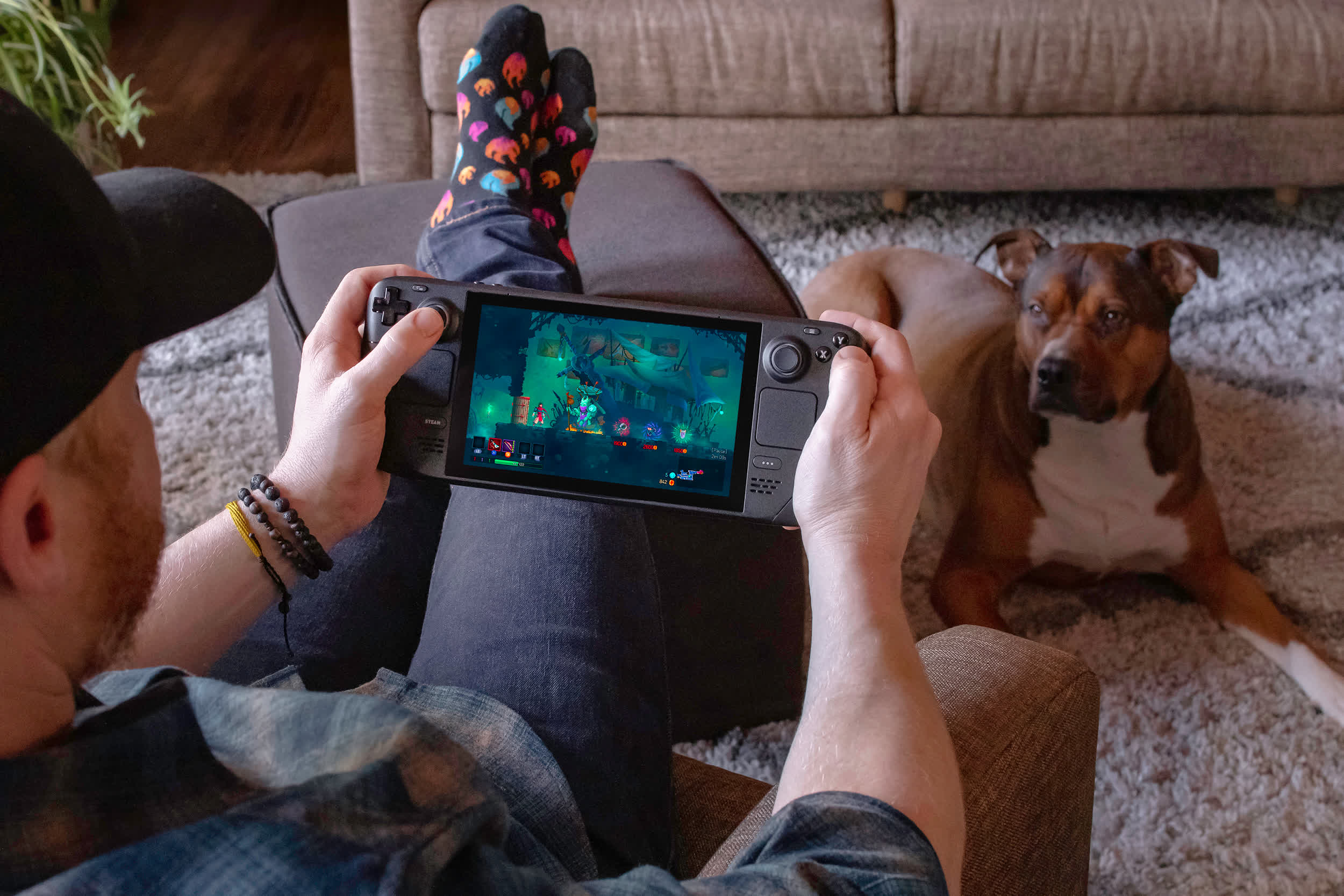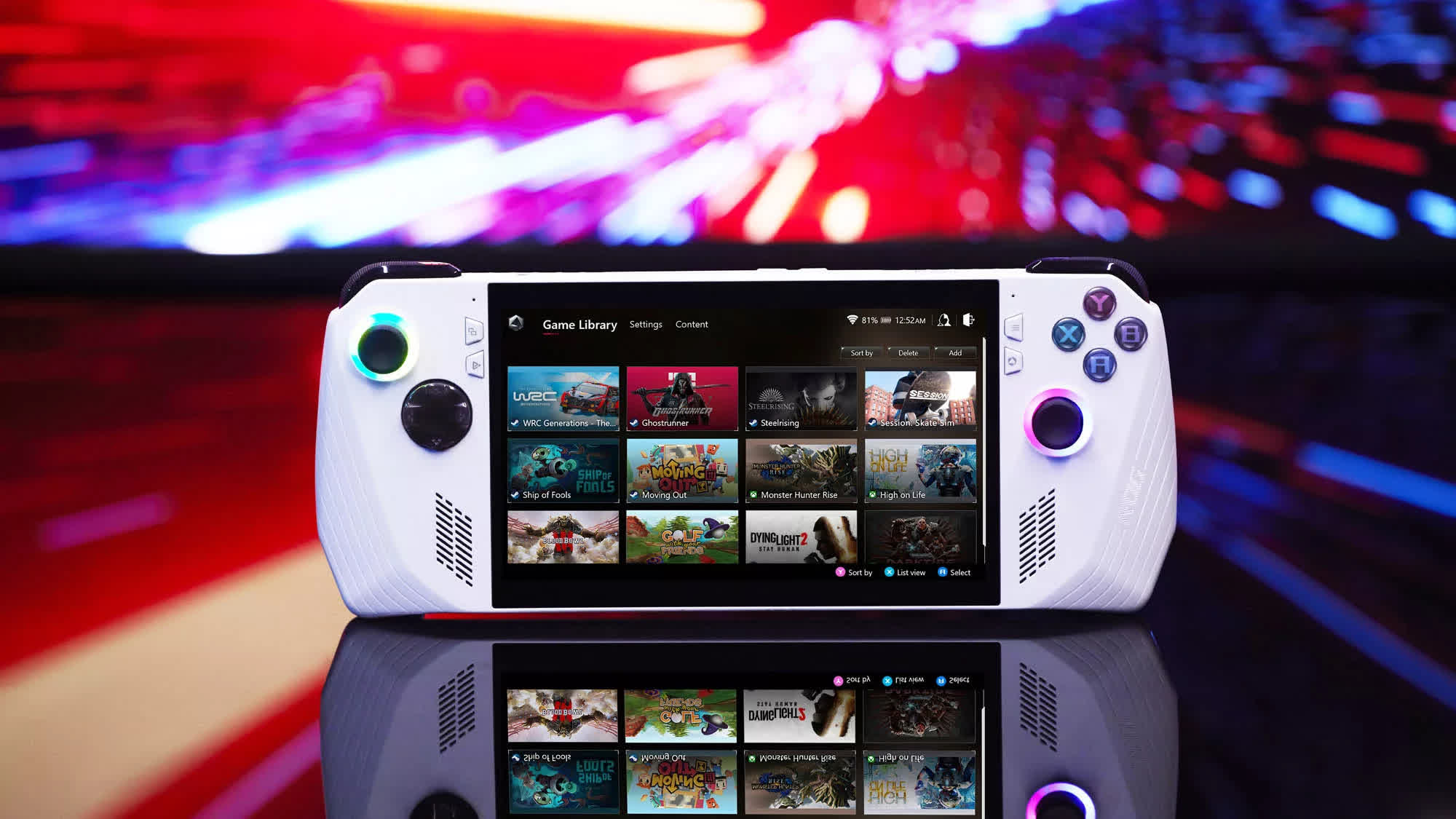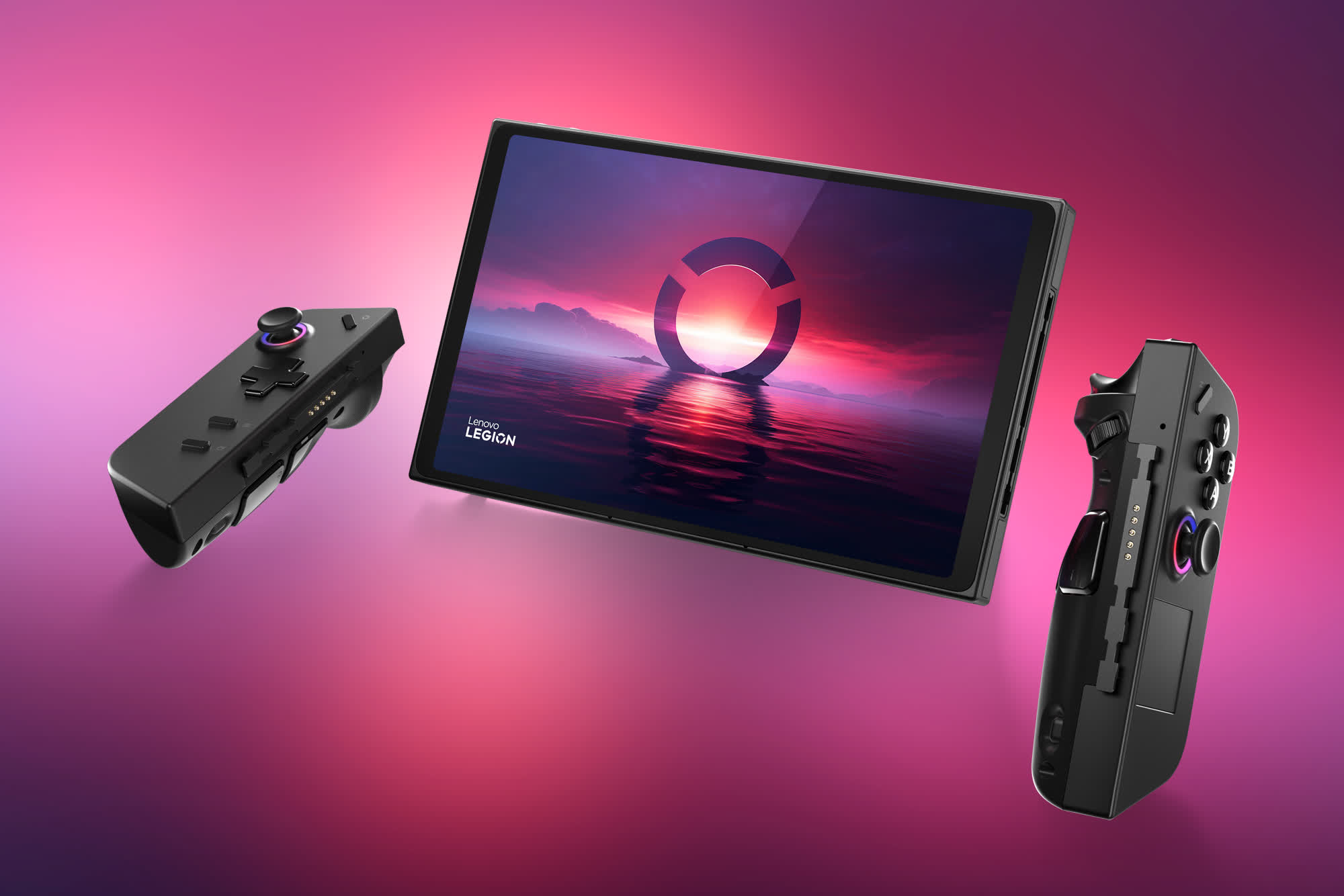The Steam Deck may not match all the capabilities of its competitors, but everything it does, it does well. The Linux-based SteamOS works flawlessly with the device, which features two trackpads under the two analog sticks.
The 7.4″ 800p OLED touchscreen model is not only nicer but also faster than the standard 7″ LCD model, with a refresh rate of 90Hz versus 60Hz. The custom AMD processor powering the Deck includes four Zen 2 cores and eight RDNA 2 graphics units, it’s about the same in both the LCD and OLED models, but on the latter it benefits from a newer manufacturing process that allows it to run at higher speeds for longer periods. It is also paired with faster memory.

The Steam Deck OLED ($549) is available with either a 512GB or 1TB replaceable 2230 M.2 drive, whereas the LCD model only offers 256GB, but starts at just $349 these days. Additionally, it boasts a larger battery and improved cooling.
The obvious drawback to the Deck is having access to only one game store out of the box. Another problem is that many online games rely on anti-cheat software that don’t support Linux.
Worthy Windows Alternatives: Asus ROG Ally and Lenovo Legion Go

If you want to play the latest AAA games, or just prefer a console that runs Windows, your best two options are the Asus ROG Ally ($670) and the Lenovo Legion Go ($630). Both consoles are powered by AMD’s Ryzen Z1 Extreme chip, featuring eight Zen 4 cores and twelve RDNA 3 graphics units. That’s much more power than the Steam Deck offers, but utilizing it requires high power settings that drain the battery faster.
The Ally also offers a cheaper version with the non-Extreme Z1 processor, featuring six Zen 4 cores and just four RDNA 3 units. Graphics aren’t usually the AMD chip’s bottleneck, so you don’t stand to lose two thirds of the performance, but losing a third is to be expected.
The Legion includes more features than the Ally, but also has more trouble with the basics. It has a 1440p display rather than 1080p, with a 144Hz refresh rate vs. 120Hz, but these numbers will need to be lowered when playing heavier games to improve performance or save battery. The Legion has an 8.8″ LCD display as opposed to the Ally’s 7″, but that will make it look less sharp at the same resolution. Its controllers are detachable, and one of them can turn into a mouse with an included stand, which is good because it’s 25% heavier than the Ally and more comfortable to use on a desk with the attached kickstand.

All Windows consoles at the moment have two problems. One is that Windows 11 wasn’t designed for use on small touchscreens, at least not without a stylus. The other is inconsistent performance. Even when enjoying higher average frame rates than the Steam Deck, some games will show frequent stutters. Whether the problem is with Microsoft or the console makers (except for Valve), handheld consoles are a niche category for them, and may not be prioritized.
Smaller brands like Ayaneo, OneXPlayer and GPD try to save themselves the work of releasing their own drivers by using standard laptop CPUs such as the Ryzen 7 7840U, upon which the Z1 Extreme is based. The problem is that such chips aren’t optimized for use in low-power devices like these, and quickly drain the battery even when playing the lightest games. The MSI Claw manages to do even worse with less efficient Intel CPUs.

